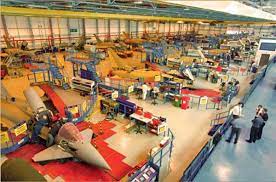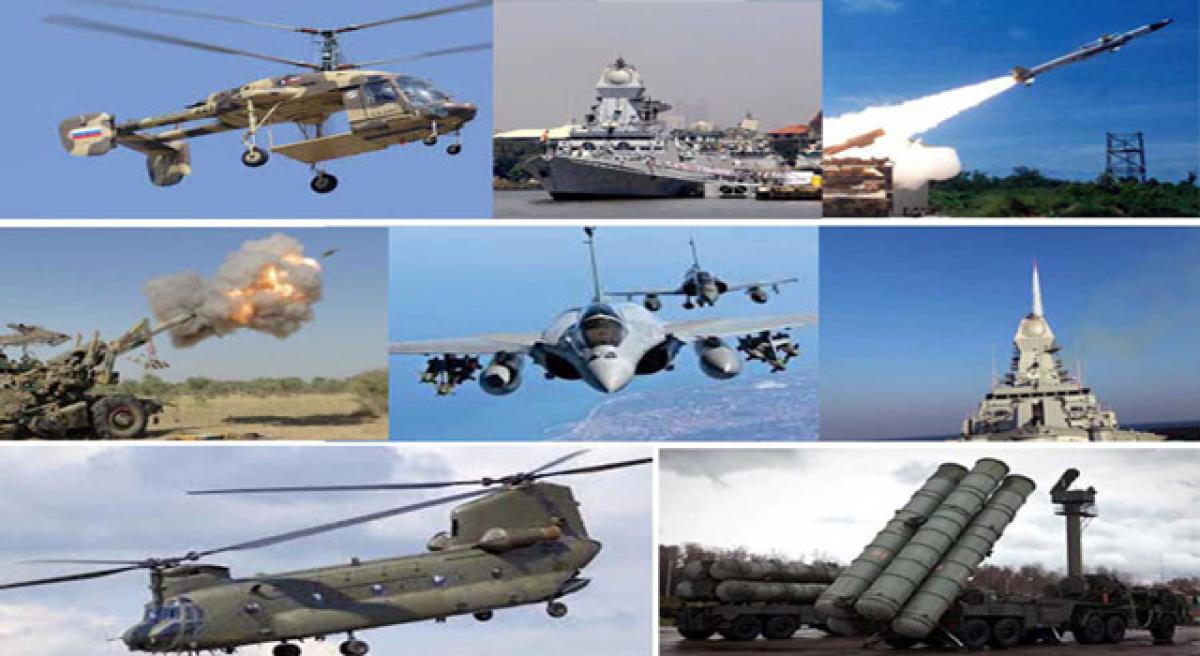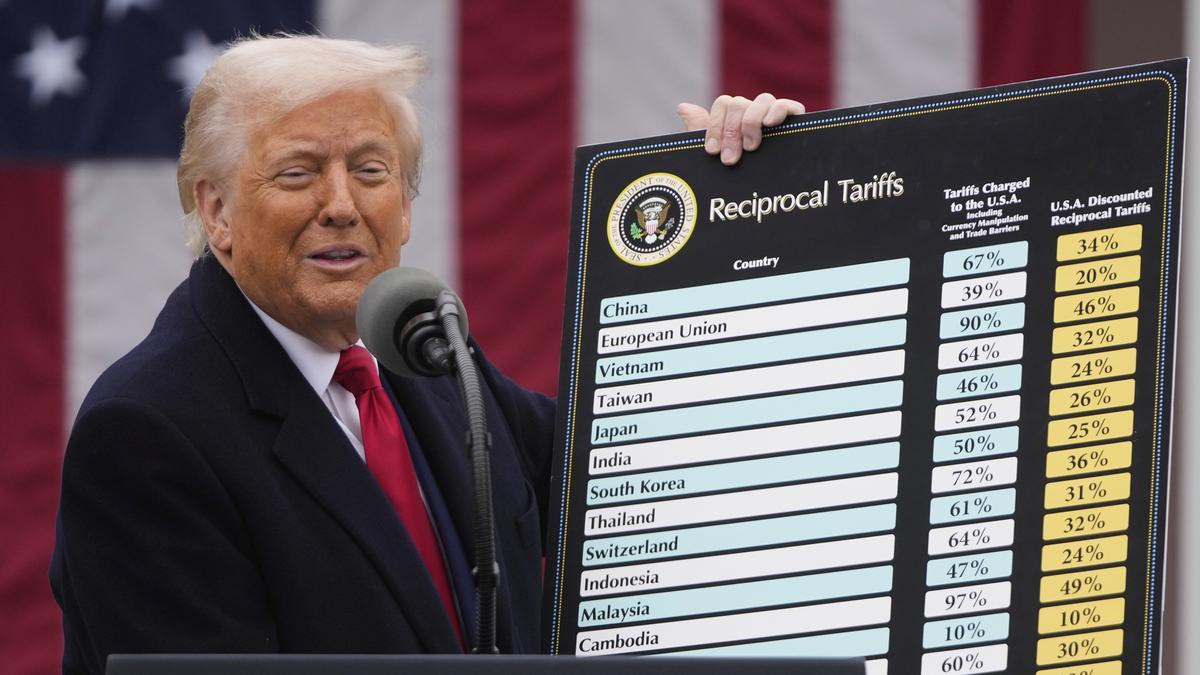Indigenous defence manufacturing is still a major challenge for our nation
At the outbreak of World War I, a key problem facing British Naval Intelligence was the detection, in time, of the German Fleet putting to sea, to enable the British Fleet based at Scapa Flow, to intercept them. Naval Intelligence knew, that when the German Fleet was not sailing, she lay berthed at the eastern end of the Kiel Canal. The British believed, that with the right equipment, it would be possible to detect the German Commander-in-Chief’s wireless communications from onboard his flagship, as the fleet passed through the Kiel Canal into the North Sea.
The scientists at Marconi company set to work and successfully designed a sufficiently sensitive, direction-finding equipment that could accurately identify the bearing of the wanted signal amid the mass of other interfering signals. The equipment took some time to perfect, but eventually, became an important weapon in the British war against German U – boats.
In 1935, Sir Robert Watson-Watt built the first practical radar set. The British Air Ministry adopted his design and used it to detect enemy aircraft during World War II. By the end of the war, radar had become an important weapon in all the branches of the militaries around the world.
A crisis impels people, societies and nations to innovate and acquire new tools and competencies to beat the crisis.
Since early last year, Indian and Chinese troops have engaged each other in aggressive run-ins along the Line of Actual Control (LAC) in eastern Ladakh. The simmering tensions came to a boil, in mid-June 2020, leading to actual fighting and casualties on both sides. Currently, an uneasy calm prevails as diplomatic parleys between the two sides attempt to find ways to end tensions, peacefully.
At the height of the tensions at the LAC, the Government of India (GoI) made two key policy announcements with a view to strengthen military preparedness.
In its first announcement, in mid-May 2020, the GoI enhanced the cap on Foreign Direct Investment (FDI) in the defence sector from 49% to 74% under the automatic route for certain niche technologies. Additionally, the new policy provided for FDI even up to 100%, with GoI approval.
FDI in defence was first permitted in 2001. However, in the period since 2001, the expectations of attracting large scale FDI in defence have been belied. Very little FDI has been channelled by foreign defence companies for defence manufacturing through JVs with Indian defence firms.
The actual FDI inflow into the defence sector, in the two decades, from Apr 2000 to Mar 2021 stands at just Rs 61.52 crore (~ USD 10.15 million; Source – www.dipp.gov.in). It is instructive to note – as an illustration of the low FDI inflow – that a single Rafale fighter jet procured from Dassault Aviation, France cost India upwards of Rs 600 Cr.
The reasons for the low FDI inflow are well known and is largely due to:
•Apprehensions around guaranteed and sustained support to make the investments/JVs financially viable.
•The onerous and somewhat ambiguous policy provisions.
•Fear of award of contracts by the GoI through a nomination to the DPSUs/OFs owing to political compulsions.
Sadly, the causes impeding FDI inflow are likely to persist and any expectation of a reversal in the trend can only lead to disappointment.
The GoI, in its second announcement in late Jul 2020, granted “special powers to the three services for individual capital procurement programs of Rs 300 Cr to meet emergent operational requirements.”
Following the grant of the special powers, the armed forces inked/began inking contracts for the procurement of equipment to meet immediate requirements. According to news reports at the time (https://theprint.in/defence/armed-forces-working-on-100-emergency-procurement-contracts-amid-tensions-with-china/465408/), the armed forces were processing over 100 procurement contracts under the special emergency powers.
The rush, in response to the border crisis, to order equipment from foreign armament suppliers, once again, laid bare India’s vulnerability with regard to its dependence on imports for defence needs. Similar emergency procurements were undertaken, in 1999, during the Kargil conflict. Clearly, not much has changed in the two decades since the Kargil war.
Without a doubt, given the circumstances at the LAC in Ladakh, emergency procurements were essential. However, emergency procurements often have unseen, longer-term consequences.
Equipment procurement from multiple countries leads to – problems of interoperability between equipment, limitations in cross-deployment of personnel, the requirement of separate facilities for training, repair & overhaul, higher equipment/spares procurement costs due to lower efficiencies of scale etc. The Indian armed forces have, for long, grappled with similar problems in past procurements.
Another mechanism, widely believed to hold great promise to help India achieve self-reliance in defence is ‘Offsets’. In traditional procurement, goods or services are exchanged for money. Defence procurement is different. Countries buying arms stipulate that some form of work should directly flow back to them from the contracts that they sign with foreign arms sellers. This flow back arrangement is widely known as ‘offsets’. Offsets are usually stipulated at a fixed percentage of the contract value.
India’s defence offset policy, first published in 2005 has been revised multiple times in an attempt to progressively make it more effective.
Has the Indian offset policy, now over a decade old, been successful in either bringing in FDI or in attracting high-end manufacturing/technology into the local industry? An honest appraisal would suggest that the policy has worked to only serve the limited purpose of promoting exports of civilian aerospace parts and components.
Some of the reasons for the ineffectiveness of the offsets policy are:
- Policy inadequacies when compared to international offset best practices.
- Extremely moderate thresholds & percentages for offsets (India – Contract value-$ 285M/offset value-30%, Malaysia – $15M/100%, S. Korea – $10M/50%, UAE- $10M/60% etc).
- Non-insistence on the principle of local value addition in both manufacturing and service offset contracts.
- Non-application of the principle of additionality & causality.
- Total freedom to the foreign vendors to choose areas of offsets.
- Lax monitoring of offset contract adherence and progress.
Jurgen Brauer and John Paul Dunne in their book, Arms Trade and Economic Development: Theory, Policy, and Cases in Arms Trade Offsets, widely considered to be the most comprehensive study of offsets, globally, state that, “neither economic theory nor extant empirical evidence suggests that offset arrangements yield net benefits.”
In a different book, they strongly argue that “offsets do not result in arms acquisition cost reductions, offsets do not stimulate broad-based civilian economic development, neither substantial nor sustained job creation occurs, not even within the military sector, that almost no successful technology transfer into the civilian sector is observed, and that only limited technology transfer into the military sector occurs, often over decades and at a high cost. Moreover, whatever technology is transferred is quickly outpaced by continuous technology advances in the main developed countries.”
A crucial issue, overlooked in all the hype around offsets for developing indigenous capability, is that offsets inflate the cost of the main procurement contracts. It is believed that the administrative cost of offsets alone amounts to 7-10 per cent of the contract value.
Clearly, neither greater FDI in defence nor offsets are likely to help India overcome its reliance on imports. In the short-term, attracting FDI or entering offset arrangements with global arms majors for technology transfers/joint development projects/licensed production arrangements etc is inescapable – to quickly bridge the existing technology divide.
However, in the long-term, self-reliance in defence can only be attained through the acquisition of indigenous capability in Design & Development (D&D) & the manufacture of defence equipment. This requires a multifold increase in investment in defence R&D (government & private sector), increasing researcher density, shifting focus from applied research to basic research and most importantly, creating a wider defence manufacturing eco-system together with the public/private sector defence firms and the MSMEs. No nation has achieved self-reliance without sustained investments in indigenous D&D capability.

The two World Wars and the years leading up to the wars spurred the frenetic development of several technologies in Europe, the USA and Japan. The technologies, systems, platforms and strategies developed in response to the wars, fundamentally altered the manner in which the wars were fought and finally won. Israel’s geographical location – amidst hostile neighbours, drives and sustains its self-reliance. South Korea’s experience in the Korean war spurred the growth of its defence industry.
During the war with China in 1962, India was a young republic, just beginning to find its feet as an independent nation. The defeat in 1962, exposed India’s vulnerabilities and aroused defence consciousness after years of neglect. Several defence reforms have been undertaken since then, but they have largely been piecemeal and ad-hoc and failed to address the root causes that hold back the growth of the Indian defence industry.
In 2021, India, now the fifth largest economy in the world, can not continue being dependent on imports to meet 70% of its defence needs. The current tensions on its borders with China could be the moment for India that spurs the initiation of a planned, determined and sustained push to acquire capabilities in indigenous D&D and defence manufacturing.
Title image courtesy: https://www.thehansindia.com/posts/index/News-Analysis/2017-07-25/Make-in-India-in-defence-sector
Disclaimer: The views and opinions expressed by the author do not necessarily reflect the views of the Government of India and Defence Research and Studies








